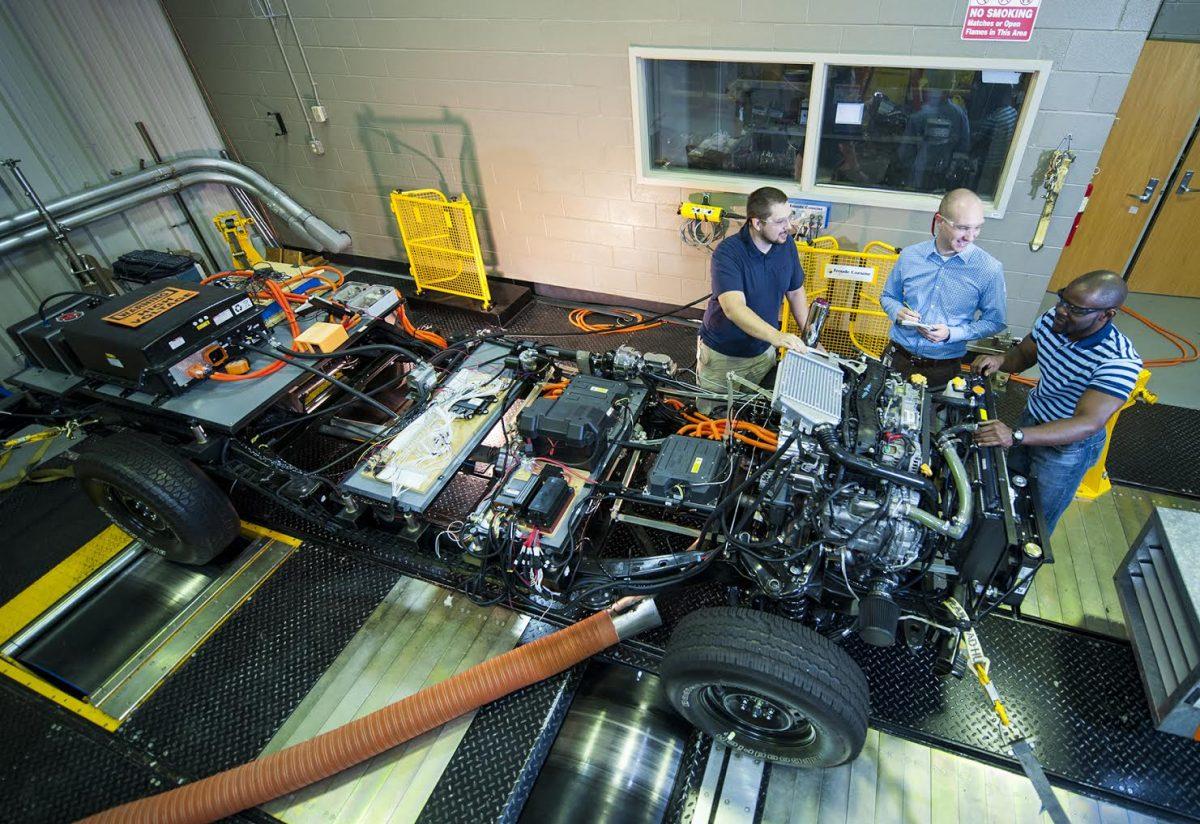For the past year, Mississippi State University engineers have worked on the “Car of the Future.” Previous projects, such as the ChallengeX and EcoCar competitions, have given MSU engineers the experiences needed to tackle such a project. The construction of the Center for Advanced Vehicular Systems (CAVS) in 2001 allowed a place for MSU to foster its talents and technologies associated with vehicular systems.
MSU chemical engineering alum Jim Worth Bagley initially prompted the Car of the Future idea. Bagley wanted to see an automobile that delivers all the benefits of today’s most advanced hybrid vehicles, but which also uses more cost-effective and simpler components. Bagley, namesake of MSU’s engineering college, funds the project.
Matthew Doude, CAVS research associate, said the program extends MSU’s capabilities every day by accepting Bagely’s challenge for the Car of the Future.
“The concepts behind the Car of the Future, such as using fewer batteries and finding ways to use the engine more efficiently, all come from Mr. Bagley’s personal experiences growing up around early hybrid designs used in heavy equipment,” Doude said. “We are applying these principles to passenger cars to create lower-cost hybrids which outperform today’s vehicles.”
Doude said he is proud of the team’s accomplishments and they strive to continue improvement.
“We have set very aggressive timelines for ourselves, and we have been pushing very hard to see how much we can accomplish every single day. The Car of the Future is about designing the next generation of vehicles, and we don’t plan on stopping any time soon,” he said.
According to Doude, one aspect of the car the team is most proud of is the powertrain test bed. The powertrain, or “mule,” allows the team to test most components of the powertrain without having to incorporate them into a full vehicle. The vehicle can operate without the doors, windows, seats or even the steering wheel.
Will Dickerson, a 2012 graduate who recently returned to CAVS to work on the project, said he, as an alum, is honored that the powertrain is being introduced on this campus.
“I love that this project takes a fresh look at a hybrid powertrain. Automotive engineering is a diverse field. Some areas include engine development, human machine interface, safety systems, electrification, etc. A powertrain development project puts all of these ideas together,” Dickerson said. “Car of the Future aims to introduce a new powertrain; one that is more efficient and cost-effective than what is available today.”
Dickerson said the automotive industry is slow to build a car such as the Car of the Future because the powertrain development can often be difficult.
“Needed components aren’t yet readily available, and the payoff is maybe too far into the future,” he said. “Our role as a research institution makes us an ideal candidate to be the first to commission this idea.”
Dickerson explained that the Car of the Future will feel the same as a normal car to the driver. However, new technologies and an optimized powertrain will maximize efficiency and performance. The engine will not be mechanically linked to the wheels. Instead, the engine will charge a high-voltage battery that allows electric motors to drive the wheels. This allows the engine to operate much more efficiently.
Other advanced features involve active torque vectoring. This feature provides more effective traction control, regenerative braking and a minimized battery pack that will be more cost-effective than what comes with today’s hybrid vehicles.
Zach Rowland, deputy director of MSU’s CAVS, said that he is proud of the work the team has completed, he is most proud of the workers themselves.
“The team is made up of CAVS staff, MSU faculty and students. The students have an opportunity to be engineers; they are applying what they are or have learned in the classroom to a real world problem,” Rowland said. “The development of technologies is important, but what will really make the long term impact is the production of world class engineers, and we are doing just that at MSU through project like this and involvement in competitions like EcoCar3.”
Categories:
Innovative Engineering: MSU’s ‘Car of the Future’
Nia Wilson
•
September 9, 2014
0
Donate to The Reflector
Your donation will support the student journalists of Mississippi State University. Your contribution will allow us to purchase equipment and cover our annual website hosting costs.
More to Discover







